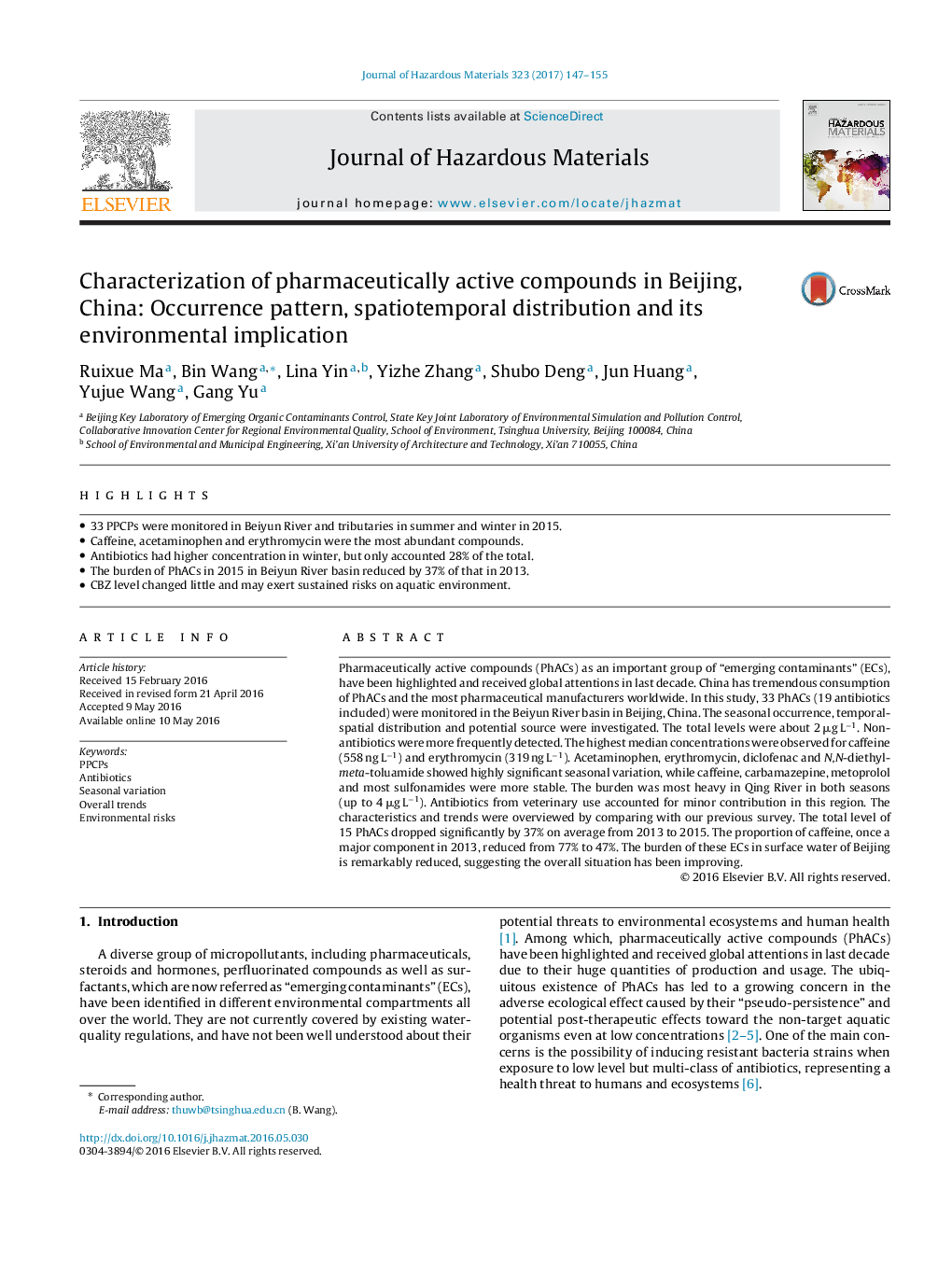| Article ID | Journal | Published Year | Pages | File Type |
|---|---|---|---|---|
| 4979947 | Journal of Hazardous Materials | 2017 | 9 Pages |
Abstract
Pharmaceutically active compounds (PhACs) as an important group of “emerging contaminants” (ECs), have been highlighted and received global attentions in last decade. China has tremendous consumption of PhACs and the most pharmaceutical manufacturers worldwide. In this study, 33 PhACs (19 antibiotics included) were monitored in the Beiyun River basin in Beijing, China. The seasonal occurrence, temporal-spatial distribution and potential source were investigated. The total levels were about 2 μg Lâ1. Non-antibiotics were more frequently detected. The highest median concentrations were observed for caffeine (558 ng Lâ1) and erythromycin (319 ng Lâ1). Acetaminophen, erythromycin, diclofenac and N,N-diethyl-meta-toluamide showed highly significant seasonal variation, while caffeine, carbamazepine, metoprolol and most sulfonamides were more stable. The burden was most heavy in Qing River in both seasons (up to 4 μg Lâ1). Antibiotics from veterinary use accounted for minor contribution in this region. The characteristics and trends were overviewed by comparing with our previous survey. The total level of 15 PhACs dropped significantly by 37% on average from 2013 to 2015. The proportion of caffeine, once a major component in 2013, reduced from 77% to 47%. The burden of these ECs in surface water of Beijing is remarkably reduced, suggesting the overall situation has been improving.
Related Topics
Physical Sciences and Engineering
Chemical Engineering
Chemical Health and Safety
Authors
Ruixue Ma, Bin Wang, Lina Yin, Yizhe Zhang, Shubo Deng, Jun Huang, Yujue Wang, Gang Yu,
